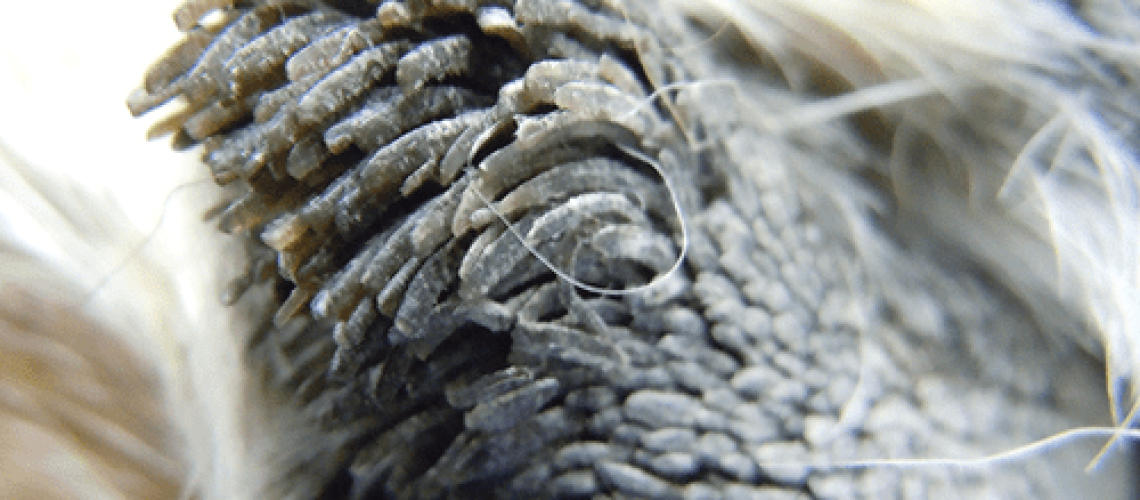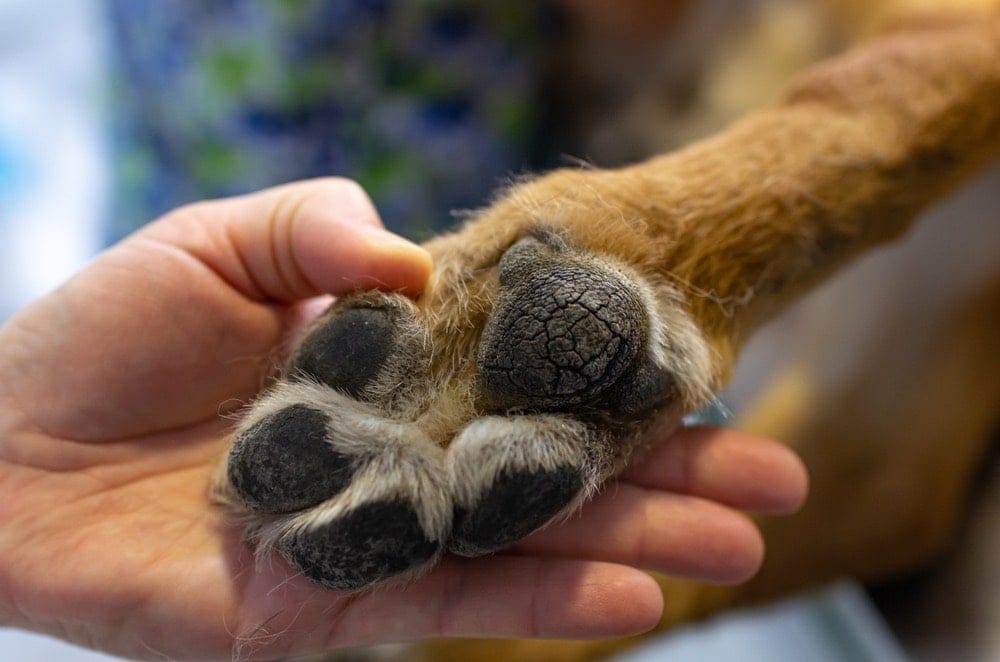Key Takeaways:
- Hyperkeratosis in dogs is a condition characterized by excessive thickening and hardening of the skin on the nose and paw pads.
- It can be caused by various factors such as genetics, autoimmune diseases, infections, or nutritional deficiencies.
- Symptoms include dry, rough, and cracked skin on the affected areas, which can lead to discomfort and pain for the dog.
- Treatment options include moisturizing creams or balms, dietary supplements, and medications prescribed by a veterinarian.
- Regular veterinary check-ups and proper grooming can help manage hyperkeratosis in dogs and prevent secondary complications.
Are you a dog owner who wants to ensure the health and happiness of your furry friend? If so, understanding hyperkeratosis in dogs is essential. This common condition can cause discomfort and even pain for our beloved pets, but by delving into this subject, you will gain valuable insights into how to prevent and manage it effectively. With clear language suitable for a 7th grader, we will explore what hyperkeratosis is, why it occurs, and the best ways to provide relief for your dog. By the end of this article, you'll have all the knowledge you need to keep your four-legged companion happy and healthy. Let's dive in!
Understanding Hyperkeratosis in Dogs: What it Does to Their Skin
Hyperkeratosis is a condition that affects a dog's skin, causing the outer layer to thicken and harden. This can lead to dry, rough, and crusty patches on their paws, nose, or other parts of the body. When left untreated, hyperkeratosis can cause discomfort and pain for your furry friend.
Hyperkeratosis occurs when there is an overproduction of keratin, a protein that forms the protective layer of the skin. Normally, keratin is shed naturally as new cells replace old ones. However, in dogs with hyperkeratosis, this shedding process becomes disrupted, leading to an accumulation of excess keratin.
The thickened skin can make it difficult for dogs to walk or run comfortably. It may cause them to limp or favor certain limbs. Additionally, the hardened skin can crack and become prone to infections. If you notice any changes in your dog's skin texture or behavior, it's important to consult with a veterinarian for proper diagnosis and treatment.
Recognizing the Signs of Hyperkeratosis in Your Dog's Skin
As a pet owner, it's essential to be aware of the signs that may indicate your dog has hyperkeratosis. Some common symptoms include:
- Dry and rough patches on the paws or nose
- Crusty or scaly skin
- Thickened skin on paw pads
- Painful cracks or fissures in the affected areas
If you observe any of these signs in your furry companion, it's crucial not to ignore them. Early detection and intervention can help prevent further discomfort and complications for your dog.
Common Causes of Hyperkeratosis in Dogs: What You Should Know
Hyperkeratosis can have various underlying causes. Some common factors that contribute to this condition include:
- Genetic predisposition: Certain dog breeds are more prone to developing hyperkeratosis, such as the Labrador Retriever, Irish Terrier, and English Bulldog.
- Infections: Bacterial or fungal infections can trigger an inflammatory response in the skin, leading to hyperkeratosis.
- Autoimmune disorders: Conditions like pemphigus or lupus can disrupt the normal keratinization process and result in thickened skin.
- Trauma or injury: In some cases, trauma or repetitive friction on the skin can cause hyperkeratosis to develop.
If you suspect your dog may have hyperkeratosis, it's important to consult with a veterinarian who can determine the underlying cause and recommend appropriate treatment options.
Treating Hyperkeratosis in Dogs: Available Options and Solutions
The treatment for hyperkeratosis in dogs depends on the severity of the condition and its underlying cause. Some common treatment options include:
- Topical therapies: Moisturizing creams or ointments can help soften and hydrate the affected areas, reducing discomfort and promoting healing.
- Keratolytic agents: These are medications that help break down excess keratin and promote shedding of the thickened skin. Your veterinarian may prescribe specific products for your dog's condition.
- Antibiotics or antifungal medications: If there is an infection present, your vet may prescribe antibiotics or antifungal drugs to treat the underlying cause of hyperkeratosis.
- Surgical intervention: In severe cases, surgery may be necessary to remove thickened skin or correct any structural abnormalities contributing to the condition.
It's important to follow your veterinarian's instructions and attend any recommended follow-up appointments to ensure the best outcome for your dog.
Are Certain Dog Breeds More Prone to Hyperkeratosis? Find Out Here
While hyperkeratosis can occur in any dog breed, certain breeds are more predisposed to developing this condition. Some of these breeds include:
- Labrador Retriever
- Irish Terrier
- English Bulldog
- Bull Terrier
- Airedale Terrier
If you have a dog from one of these breeds, it's essential to be vigilant and regularly inspect their skin for any signs of hyperkeratosis. Early detection can lead to prompt treatment and better management of the condition.
Preventing and Managing Hyperkeratosis in Your Dog: Tips for Pet Owners
While some causes of hyperkeratosis cannot be prevented, there are steps you can take as a pet owner to help manage the condition and improve your dog's comfort:
- Maintain good hygiene: Regularly clean and moisturize your dog's paws and nose with pet-safe products recommended by your veterinarian.
- Avoid harsh surfaces: Limit your dog's exposure to rough or abrasive surfaces that could further irritate their sensitive skin.
- Dietary considerations: Ensure your dog is on a balanced diet that provides essential nutrients for healthy skin and coat.
- Footwear protection: In cases where walking becomes painful, consider using protective booties or socks to cushion their paws.
- Regular veterinary check-ups: Schedule routine check-ups with your veterinarian to monitor your dog's overall health and address any concerns promptly.
By implementing these preventative measures and staying proactive, you can help minimize the impact of hyperkeratosis on your dog's well-being.
In conclusion, hyperkeratosis in dogs is a condition where the skin on their paws or nose becomes thick and hard. It can cause discomfort for the dog, but with proper care and treatment from a veterinarian, it can be managed effectively.
How do you get rid of hyperkeratosis in dogs?
If your dog has excess keratin on their paws but there is no infection or serious danger, you can safely trim it off. It is recommended to consult with your veterinarian before performing this procedure.
What causes hyperkeratosis in dogs?
The main factors that contribute to hyperkeratosis in dogs are genetics, aging, autoimmune diseases, infectious diseases, and a lack of protein.
Is hyperkeratosis in dogs painful?
In certain situations, the skin on a dog's paw can crack, leading to bleeding. The paw pads also become thicker, rougher, and occasionally harder. The thickening can sometimes be very noticeable. This inflammation and frequent cracking can cause pain for dogs and may result in limping.
Should I take my dog to the vet for hyperkeratosis?
Hyperkeratosis can cause significant discomfort for dogs when walking or standing. It is important to regularly examine your dog's paws for excessively thickened skin, particularly if you have a breed that is susceptible to this condition. If you observe indications of intense pain or discomfort, consult with your veterinarian.
What triggers hyperkeratosis?
Pressure-related hyperkeratosis is caused by excessive pressure, inflammation, or irritation to the skin, which leads to the production of extra layers of keratin. On the other hand, non-pressure related keratosis occurs on unaffected skin.
What dog breeds are prone to hyperkeratosis?
On the other hand, hyperkeratosis can also appear on a dog's nose, ears, or elbows. Any dog, regardless of age or breed, can be affected by this condition, but certain breeds like Boston Terriers, Beagles, Boxers, Cocker Spaniels, basset hounds, and Labrador retrievers seem to have a higher vulnerability to it.

















